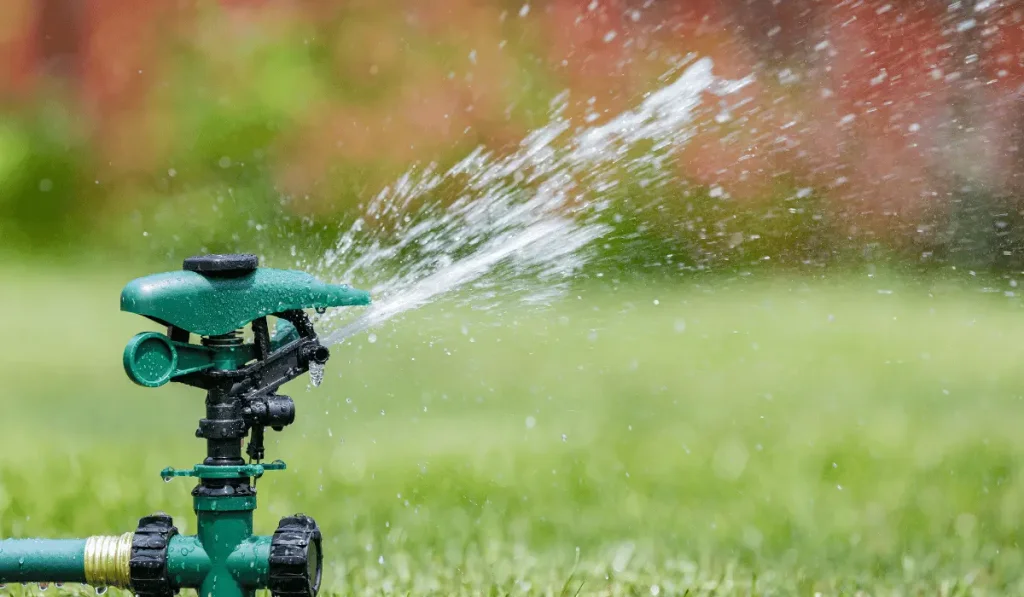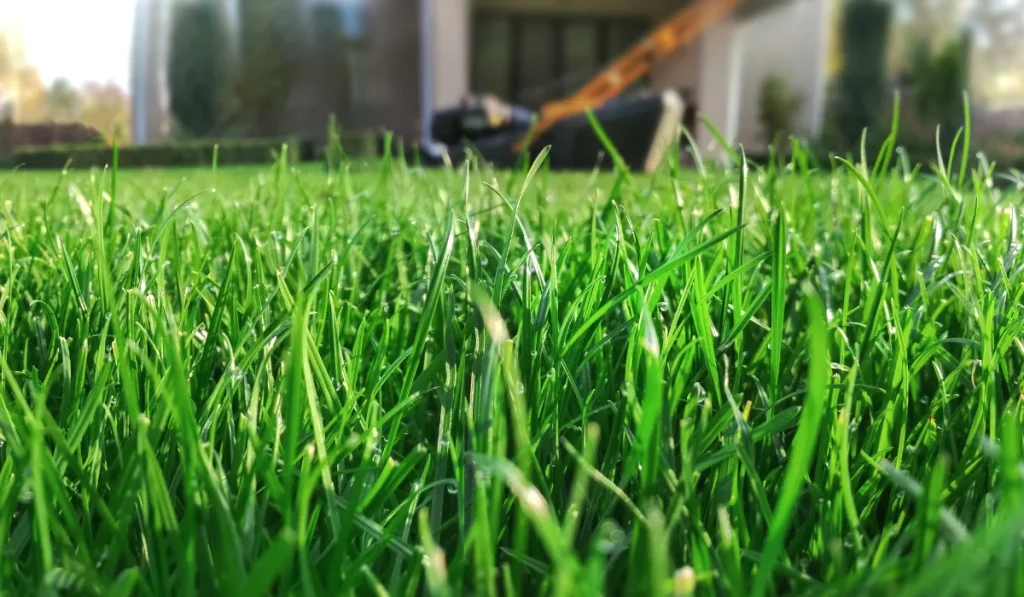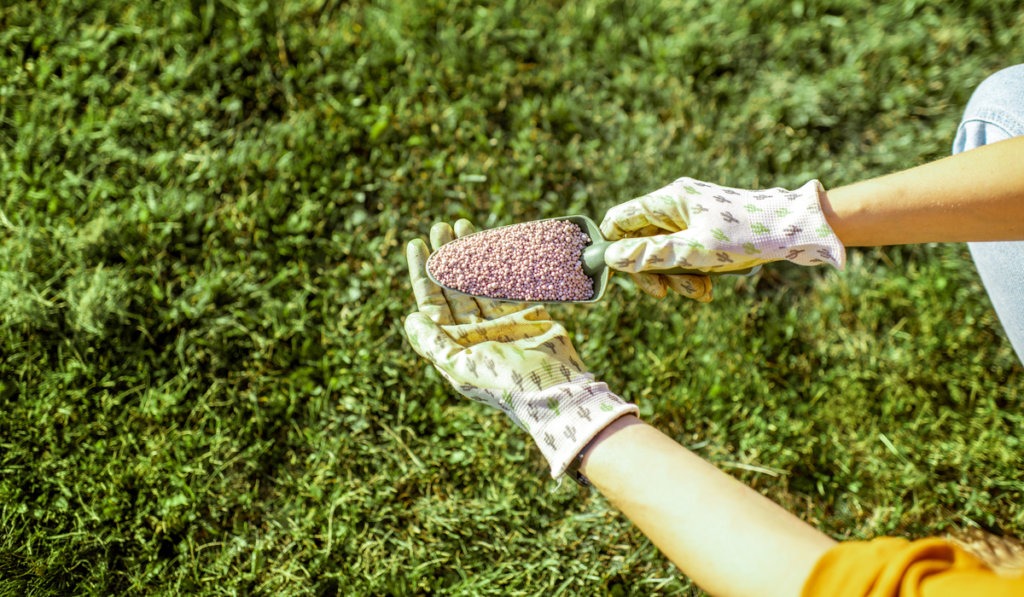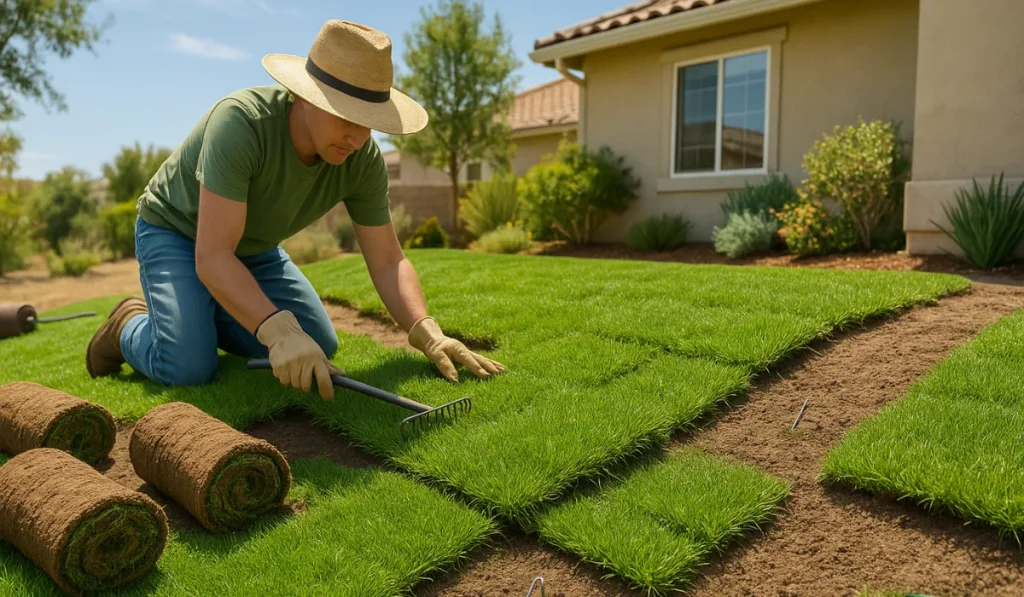Did you know that improperly watering new sod can waste so much water and still leave your lawn unhealthy? Especially in San Jose’s warmer climate, correct watering practices are crucial for new sod to thrive.
What are the best ways to keep your fresh lawn hydrated efficiently? Keep reading to learn the essential tips for watering new sod in San Jose.
Key Takeaways
- New sod requires intensive watering during the first two weeks to establish roots, involving two to three times daily watering to keep the soil evenly moist.
- After the first two weeks, transition to deeper, less frequent watering, adjusting to three to four times per week to encourage deeper root growth.
- After four weeks, establish a regular watering schedule of two to three times per week to support a mature root system and prevent lawn diseases.
Watering Schedule for New Sod in San Jose
After installing new sod in your San Jose front yard, it is crucial to establish an effective watering schedule. This ensures the sod develops a strong root system and thrives in its new environment.
Weeks 1-2: Intensive Watering
During the first two weeks after sod installation, the sod needs an intensive watering regime to help it establish roots. The focus is on keeping the soil consistently moist, 2 to 3 inches deep, to prevent the new lawn from drying out and to support root establishment.
To reduce evaporation and promote deeper soaking, gradually soak the soil.
| Aspects | Details |
|---|---|
| Frequency | 3-4 times a day |
| Best Time | Early morning, mid morning and early afternoon |
| Amount of Water | Approximately 1 inch of water per day |
Weeks 3-4: Reduce Watering Frequency
As the sod begins to take root, it’s important to start adjusting the watering schedule. The priority shifts to encouraging deeper root growth and reducing waterlogging.
Transition to less frequent but deeper watering sessions, between 4 and 6 inches.
This change can help the turfgrass roots grow deeper, preventing topsoil runoff and avoiding water waste.
| Aspects | Details |
|---|---|
| Frequency | 3-4 times per week |
| Best Time | Early morning |
| Amount of Water | 1-1 ½ inches of water per week |
After 4 Weeks: Establish Long-Term Watering Practices
After four weeks, the sod should be relatively established. A long-term watering schedule is necessary to maintain the new lawn’s health. The focus is supporting the mature root system and ensuring the lawn stays green and lush.
At this stage, too much water can lead to problems such as fungal growth and reduced oxygen for the roots.
| Aspects | Details |
|---|---|
| Frequency | 2-3 times per week |
| Best Time | Early morning |
| Amount of Water | Approximately 1 ½ inches of water per week |
Best Practices for Watering New Sod
Establishing a healthy sod lawn in San Jose requires careful attention to soil moisture, water usage, and landscape specifics. As homeowners, you must adapt your watering practices to local weather conditions and soil types.
Track Soil Moisture Regularly
Different soil types, such as sandy or clay soil, have varying moisture retention capacities. According to your current needs, regularly checking moisture levels can help adjust watering schedules.
Customize Watering Practices
Tailoring watering schedules to the specific needs of sod types like tall fescue or bluegrass can promote healthier lawns. Factors such as weather and soil type can influence watering practices.
Adjust watering frequency based on temperature and rainfall. Sod delivery and sod type must also influence these decisions.
Implement Water-Saving Techniques
Amid rising water use awareness in California, employing water-saving practices ensures efficient use.
Ensure Uniform Water Coverage
Uniform coverage is essential to avoid dry spots or waterlogged areas. Equip your lawn with high-efficiency sprinkler heads and nozzles for even water distribution.
Regularly calibrate sprinklers, ensuring zones overlap for consistent coverage. Also, fix any clogs or leaks to maintain optimal performance.
Identify Proper Moisture Uptake
Proper moisture uptake ensures that the sod root system thrives. This involves ensuring the water reaches the roots, and the grass fully absorbs it. Check for signs of proper absorption to maintain a healthy lawn.
Mulch Cautiously
Mulching can help keep soil moisture and provide nutrients for new sod, but it must be applied carefully to avoid suffocating the roots.
You can use a very thin layer of organic options like straw or fine compost. In addition, regularly track moisture levels beneath the mulch to ensure optimal growth conditions.
Keep Track of Water Usage
Accurately tracking water usage helps manage resources effectively. With that, you can ensure you follow local water restrictions in San Jose.
Documenting the frequency and quantity of watering can optimize usage. Based on this data, adjust your watering practices to stay informed and compliant with regulations.
Address Moisture-Related Lawn Issues
To prevent long-term damage, address moisture-related problems like lawn diseases immediately. Quickly resolving these issues is crucial for maintaining sod lawn health. If fungal issues arise, apply fungicides as needed. For dry spots, adjust watering or replace the sod. If water logging occurs, improve soil drainage to enhance conditions.
Hire Lawn Care Professionals
Hiring professionals for lawn care in San Jose ensures expertly managed sod lawns, as they know the local climate and soil types.
Rely on reputable companies for complex maintenance tasks beyond mowing and aeration, gain insights into optimal watering schedules, and schedule regular lawn care for long-term lawn health.
Related: Overwatering or What? Why Your Grass Is Growing So Fast



